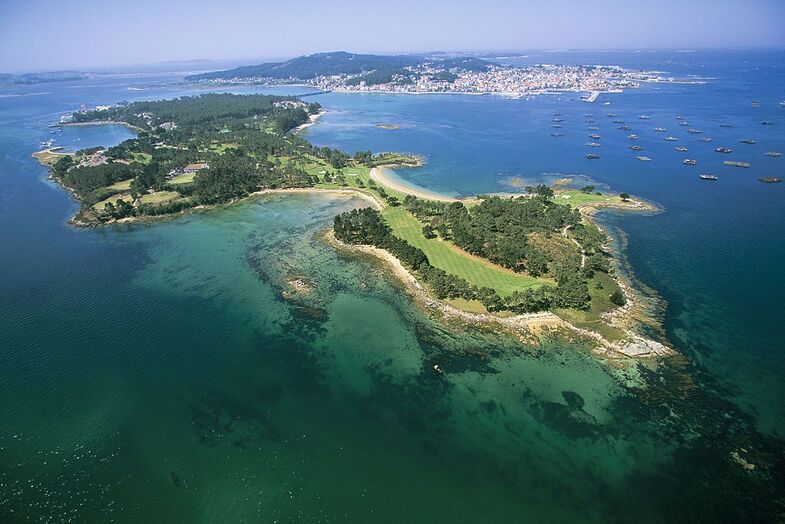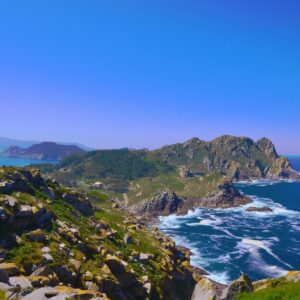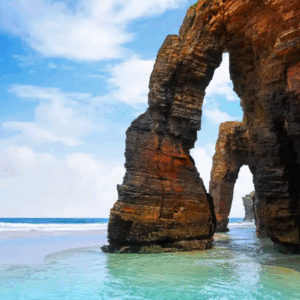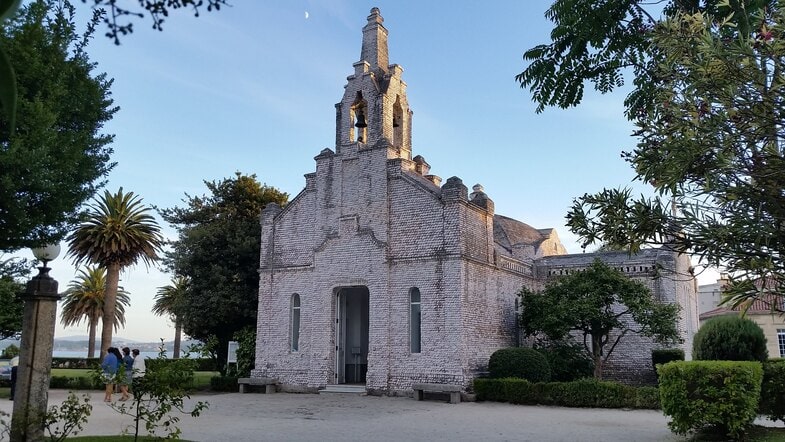La Toja Island: Nature, History, and Wellness

Table of Contents
Nature and sustainability: the soul of the island
La Toja Island, also known by its Galician name A Toxa, is nestled in the Arousa estuary, at the very heart of the Rías Baixas region—one of the most emblematic and attractive areas of Galicia, renowned for its scenic beauty, biodiversity, history, and cultural traditions. This island, which seems to gently rise from the sea, is surrounded by calm, crystal-clear waters, saline marshes, ancient pine forests, and native flora that has withstood the passage of time. Despite its small size, it has become a benchmark for sustainable tourism, maintaining a serene, well-preserved, and balanced atmosphere that invites both relaxation and active contemplation of the surroundings.
What makes La Toja truly special is its strong commitment to environmental preservation. In contrast to the rapid urbanization affecting many tourist destinations, this island has managed to stay away from mass tourism, preserving its natural identity intact. Within its few hectares, visitors can find secluded beaches with fine sand, shaded trails lined with eucalyptus and pine trees, specially arranged spots for observing migratory birds, and environmental interpretation areas designed to foster a respectful connection with nature.
Unlike other locations that have chosen an intensive tourism model, La Toja Island has followed an alternative path: prioritizing quality over quantity, and authenticity over artificial noise. This is evident in the island’s harmonious, integrated architecture, the careful management of waste and water resources, and the types of activities offered to visitors—peaceful, educational, sensory, and sustainable experiences.
Galicia travels products
-

Rias Baixas Excursion
Rated 4.93 out of 530,00€ – 55,00€Price range: 30,00€ through 55,00€ Select date(s) This product has multiple variants. The options may be chosen on the product page -

Playa de Catedrales – Mariña Lucense – Asturias
Rated 4.92 out of 535,00€ – 60,00€Price range: 35,00€ through 60,00€ Select date(s) This product has multiple variants. The options may be chosen on the product page -

French Way
360,00€ – 2.150,00€Price range: 360,00€ through 2.150,00€ Select options This product has multiple variants. The options may be chosen on the product page -
Sale!

Finisterre, Muxía, Costa da Morte
Rated 4.94 out of 520,00€ – 49,00€Price range: 20,00€ through 49,00€ Select date(s) This product has multiple variants. The options may be chosen on the product page
Well-being and thermal tradition
The history of Illa da Toxa is deeply intertwined with its thermal waters, which were discovered by chance in the 19th century. Since then, these sulfur-rich, mineral-laden waters have been the driving force behind its development as a destination for health and wellness. The iconic spa, built at the end of the 19th century, quickly became a popular retreat for the aristocracy and high society of the time, who found on the island a place for rest, treatment of rheumatic and skin conditions, and rejuvenation of both body and spirit.
Today, the Toja Spa has been renovated and modernized without losing its historical essence. It blends traditional treatments—such as thermal mud wraps, Scottish showers, and mineral baths—with new wellness offerings like hydrothermal circuits, cutting-edge facial treatments, detox programs, and holistic experiences that incorporate yoga, meditation, and aromatherapy. All of this takes place in a unique setting, surrounded by the calm of the estuary, which enhances the therapeutic effect of the treatments.
Wellness on La Toja is not limited to the spa facilities. The island itself serves as a natural health retreat. With mild temperatures throughout the year, iodine-rich sea air, and a silence broken only by birdsong or the whisper of waves, it offers an ideal setting for self-care and disconnection. Whether strolling along its paths at sunset, practicing tai chi by the sea, or simply enjoying the sun and breeze on a terrace, visitors experience a constant sense of balance and harmony.
Beaches and coastal environment
The beaches of La Toja Island are neither large nor crowded, but they have an unmistakable charm. Their golden sand, calm waters, and well-maintained surroundings invite leisurely swimming, contemplation, and a leisurely enjoyment of nature. They are ideal places for families with children, couples seeking privacy, or solo travelers looking to reconnect with the landscape. Many of these beaches are surrounded by native vegetation, which provides natural shade and protects coastal ecosystems.
La Toja’s strategic location also allows easy access to other outstanding sandy beaches in the Rías Bajas, such as the spectacular A Lanzada beach, over two kilometers long, or the hidden coves of O Grove, known for their unspoiled beauty and crystal-clear waters. Thus, those seeking a varied coastal experience have a privileged starting point in La Toja.
For those seeking a more active experience, there are opportunities to practice environmentally friendly water sports: paddleboarding, dinghy sailing, kayaking, or snorkeling in authorized areas. These activities are carried out under principles of low environmental impact, promoting environmental education and the observation of marine fauna and flora without disturbing them.
Read also: 14 MUST-VISIT ISLANDS IN GALICIA
Hiking and exploring
Hiking on La Toja Island is one of the best ways to explore it. Despite its small size, there are several routes adapted to different levels of difficulty. The most popular is the circular walk that runs around the island’s perimeter, a route of about six kilometers that passes through forests, borders gentle cliffs, and offers picture-postcard views of the estuary, the bridge that connects the island to O Grove, and the Galician coast in the background.
In addition to traditional hiking, there are routes that can be done by bicycle or even on horseback, and alternatives to explore the marine environment, such as catamaran rides or traditional boats, which allow you to learn about the area’s maritime history from the water. These experiences offer a different perspective and complement a visit on land.
The biodiversity that the island harbors is remarkable: herons, cormorants, seagulls, various species of fish, and halophilous plants make up a valuable ecosystem that is maintained thanks to conservation efforts and the low density of visitors. It is even possible to see otters or migratory birds if you visit the island during the appropriate season. All this makes La Toja a perfect microcosm for those who enjoy nature tourism.
Heritage and spirituality: the Church of the Shells
Among the most curious and endearing features of La Toja Island is the Church of San Caralampio, better known as the Chapel of the Shells. Completely covered in scallop shells, this building is one of the most photographed and admired for its uniqueness. The shells, which completely cover its exterior walls, form a mosaic that shines in the sunlight and directly connects with the symbol of the Camino de Santiago.
This small church, in addition to being a place of worship, serves an important cultural function. Masses, commemorative events, and small classical or popular music concerts are held inside during the summer months. Its presence recalls the spiritual value the island has always held, perceived as a place of contemplation, introspection, and peace.
Next to this Church of San Caralampio, other vestiges of the past are preserved: old wash houses, restored mills, contemporary sculptures integrated into the landscape, and elements of traditional Galician architecture. All of this forms a heritage mosaic that helps us understand the island’s history and its close relationship with Galician culture.

Atlantic gastronomy: the taste of La Toja
One of the greatest pleasures of visiting La Toja Island is undoubtedly its gastronomy. In its restaurants and taverns, you can enjoy authentic Atlantic cuisine, based on fresh produce and recipes passed down from generation to generation. Seafood is the undisputed star: clams a la marinière, grilled razor clams, oysters with lemon, steamed mussels, gratin scallops, not to mention the iconic pulpo à feira, served with olive oil, coarse salt, and paprika.
These delicacies are accompanied by excellent wines from the Rías Baixas Designation of Origin, especially Albariño, a fresh and fruity white wine that pairs perfectly with the flavors of the sea. The island also hosts gastronomic events and tasting sessions that allow visitors to learn about local culinary traditions and participate in tastings, workshops, and raft tours.
Galician history and identity
La Toja Island is not only a natural and tourist enclave, but also a place with deep historical and cultural roots. Since its rediscovery in the 19th century as a spa resort, it has attracted writers, artists, and thinkers who found it a haven for creativity and contemplation. This intellectual and spiritual facet remains alive in the Galician imagination.
Old photographs, period postcards, historical documents, and local testimonies attest to the almost legendary character of this island. Today, this legacy is respectfully preserved and integrated into the cultural offering: temporary exhibitions, guided tours, literary trails, and educational activities help keep the memory of La Toja alive.
A gem among many: discover more with Galicia Travels
La Toja Island is, without a doubt, a unique gem in the diverse tapestry of the Rías Baixas. Its balance of nature, well-being, history, and culture make it an ideal destination for those seeking more than just sun and sand. But beyond the island, Galicia offers countless complementary experiences: wine routes, natural parks like the Atlantic Islands, charming fishing villages like Combarro and Cambados, and a living tradition expressed in festivals, legends, and ancient crafts.
If you want to immerse yourself in this fascinating world, Galicia Travels offers guided tours, personalized excursions, gastronomic experiences, rural getaways, and everything you need to discover Galicia in an authentic, respectful, and enriching way. La Toja Island can be the beginning of an unforgettable adventure through one of the most beautiful and unique regions in northern Spain.
